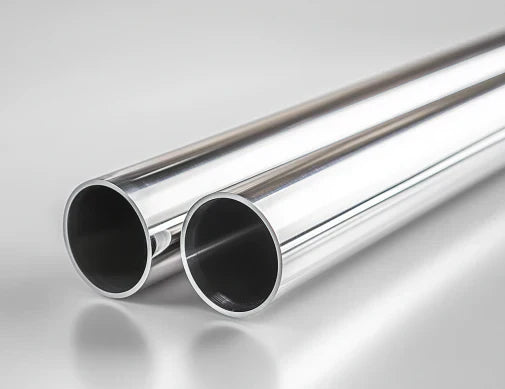
Is 304 Stainless Steel Non-Ferrous?
Table of Contents
Introduction & Final Thoughts
If you’ve ever wondered whether 304 stainless steel is non-ferrous, you’re not alone. Many people get confused about different types of metals, especially when it comes to stainless steel. In this guide, we’ll break it down in plain language, answer common questions, and help you understand how to know if something is stainless steel, the difference between 304 vs 18/10 stainless steel, and why 18/8 food grade stainless steel is popular in kitchens.
Final Answer: No, 304 stainless steel is not non-ferrous because it contains iron. However, its high chromium and nickel content make it rust-resistant, shiny, and great for everyday use.
What Does "Non-Ferrous" Mean?
First, let’s clarify what "non-ferrous" means. The term comes from the Latin word ferrum, which means iron.
- Ferrous metals contain iron (like regular steel).
- Non-ferrous metals do not contain iron (like aluminum, copper, or brass).
Stainless steel is a special case: It does contain iron, but also has other elements (like chromium and nickel) that make it resist rust and corrosion.
Is 304 Stainless Steel Non-Ferrous?
No, 304 stainless steel is not non-ferrous because it contains iron. However, it’s called "stainless" because it has at least 10.5% chromium, which forms a protective layer to prevent rust. It also has nickel (usually 8–10.5%) to improve resistance and shine.
How to Know If Something Is Stainless Steel
- Look for a Stamp or Label: "304", "316", "18/8", or "Inox".
- Check If It’s Magnetic: 304 stainless steel is usually non-magnetic or weakly magnetic.
- Test for Rust Resistance: Good quality stainless should resist rust in damp areas.
- Look at the Color and Shine: Stainless has a bright silvery finish.
18/8 Food Grade Stainless Steel
18/8 stainless steel means:
- 18% chromium → protects from rust
- 8% nickel → boosts shine and durability
It’s perfect for cookware, utensils, and food storage. It’s safe with acidic foods and doesn’t rust easily.
Yes, 18/8 is basically the same as 304 stainless steel.
304 vs 18/10 Stainless Steel
Both are food-safe and corrosion-resistant. The difference is:
| Type | Chromium (%) | Nickel (%) | Common Uses |
|---|---|---|---|
| 304 (18/8) | 18% | 8% | Cookware, sinks, appliances |
| 18/10 | 18% | 10% | Premium cutlery, surgical tools |
18/10 has slightly more nickel, so it’s more corrosion-resistant and shinier. But 304 (18/8) is more than enough for most people.
Why This Matters in Real Life
- Cookware & Kitchen Tools → Use 304 (18/8) stainless steel.
- High-End Knives & Forks → Go for 18/10 stainless steel.
- Outdoor Fixtures → 304 stainless steel handles the weather well.
Now you know how to tell if something is stainless steel, the difference between 304 vs 18/10, and why 18/8 food grade is so trusted in kitchens.
